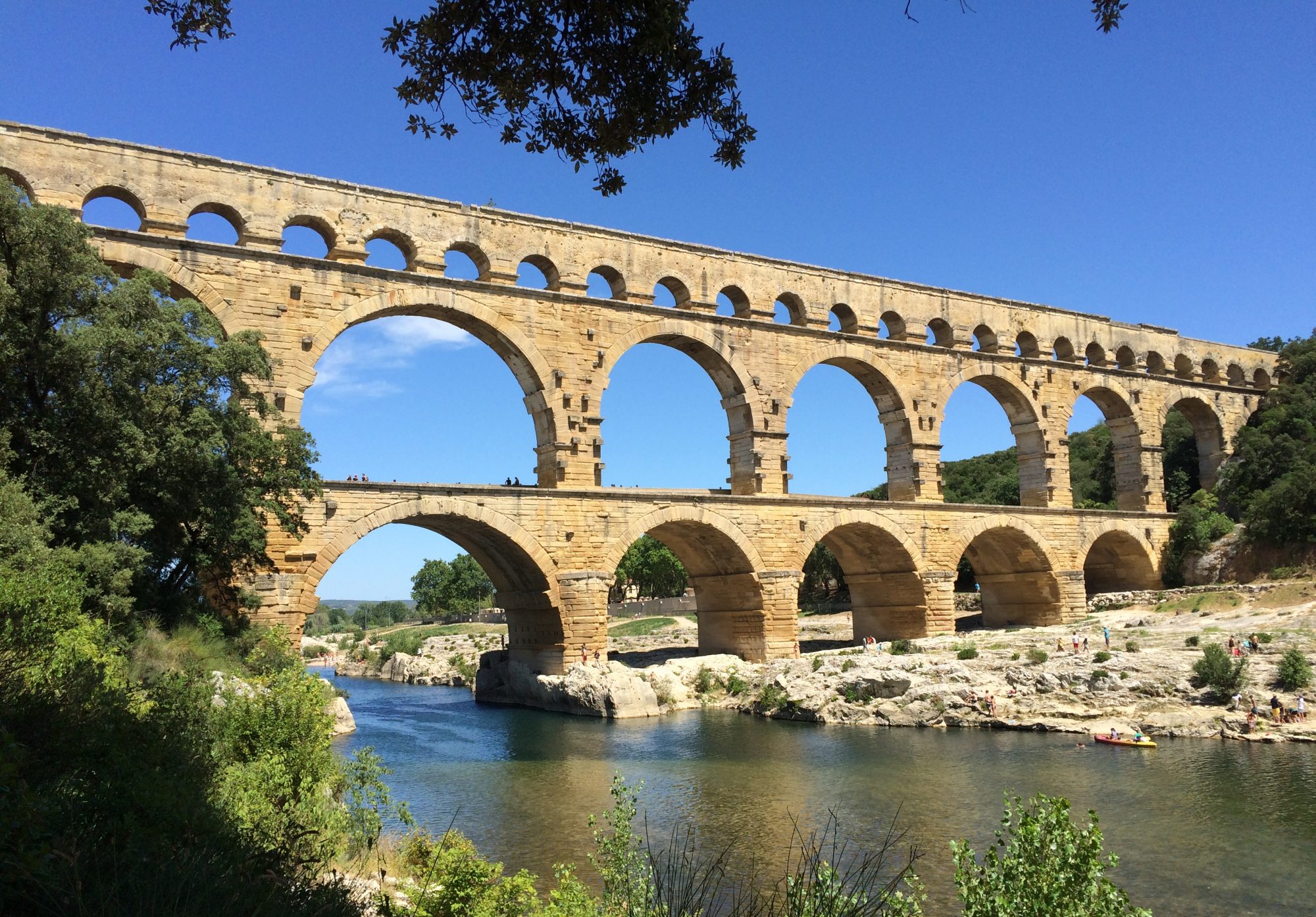Projekttitel: eManual Alte Geschichte
Modul [optional]:
Autor_in: Herodot/ Lysias
Lizenz: CC-BY-NC-SA
Hdt. 7.34-36 – Original:
[1] ἐς ταύτην ὦν τὴν ἀκτὴν ἐξ Ἀβύδου ὁρμώμενοι ἐγεφύρουν τοῖσι προσέκειτο, τὴν μὲν λευκολίνου Φοίνικες, τὴν δ᾽ ἑτέρην τὴν βυβλίνην Αἰγύπτιοι. ἔστι δὲ ἑπτὰ στάδιοι ἐξ Ἀβύδου ἐς τὴν ἀπαντίον. καὶ δὴ ἐζευγμένου τοῦ πόρου ἐπιγενόμενος χειμὼν μέγας συνέκοψέ τε ἐκεῖνα πάντα καὶ διέλυσε. [1] ὡς δ᾽ ἐπύθετο Ξέρξης, δεινὰ ποιεύμενος τὸν Ἑλλήσποντον ἐκέλευσε τριηκοσίας ἐπικέσθαι μάστιγι πληγὰς καὶ κατεῖναι ἐς τὸ πέλαγος πεδέων ζεῦγος. ἤδη δὲ ἤκουσα ὡς καὶ στιγέας ἅμα τούτοισι ἀπέπεμψε στίξοντας τὸν Ἑλλήσποντον. [2] ἐνετέλλετο δὲ ὦν ῥαπίζοντας λέγειν βάρβαρά τε καὶ ἀτάσθαλα: ‘ὦ πικρὸν ὕδωρ, δεσπότης τοι δίκην ἐπιτιθεῖ τήνδε, ὅτι μιν ἠδίκησας οὐδὲν πρὸς ἐκείνου ἄδικον παθόν. καὶ βασιλεὺς μὲν Ξέρξης διαβήσεταί σε, ἤν τε σύ γε βούλῃ ἤν τε μή: σοὶ δὲ κατὰ δίκην ἄρα οὐδεὶς ἀνθρώπων θύει ὡς ἐόντι καὶ θολερῷ καὶ ἁλμυρῷ ποταμῷ.’ [3] τήν τε δὴ θάλασσαν ἐνετέλλετο τούτοισι ζημιοῦν καὶ τῶν ἐπεστεώτων τῇ ζεύξι τοῦ Ἑλλησπόντου ἀποταμεῖν τὰς κεφαλάς. [1] καὶ οἳ μὲν ταῦτα ἐποίεον, τοῖσι προσέκειτο αὕτη ἡ ἄχαρις τιμή, τὰς δὲ ἄλλοι ἀρχιτέκτονες ἐζεύγνυσαν. ἐζεύγνυσαν δὲ ὧδε, πεντηκοντέρους καὶ τριήρεας συνθέντες, ὑπὸ μὲν τὴν πρὸς τοῦ Εὐξείνου πόντου ἑξήκοντά τε καὶ τριηκοσίας, ὑπὸ δὲ τὴν ἑτέρην τεσσερεσκαίδεκα καὶ τριηκοσίας, τοῦ μὲν Πόντου ἐπικαρσίας τοῦ δὲ Ἑλλησπόντου κατὰ ῥόον, ἵνα ἀνακωχεύῃ τὸν τόνον τῶν ὅπλων: [2] συνθέντες δὲ ἀγκύρας κατῆκαν περιμήκεας, τὰς μὲν πρὸς τοῦ Πόντου τῆς ἑτέρης τῶν ἀνέμων εἵνεκεν τῶν ἔσωθεν ἐκπνεόντων, τῆς δὲ ἑτέρης πρὸς ἑσπέρης τε καὶ τοῦ Αἰγαίου ζεφύρου τε καὶ νότου εἵνεκα. διέκπλοον δὲ ὑπόφαυσιν κατέλιπον τῶν πεντηκοντέρων καὶ τριηρέων, ἵνα καὶ ἐς τὸν Πόντον ἔχῃ ὁ βουλόμενος πλέειν πλοίοισι λεπτοῖσι καὶ ἐκ τοῦ Πόντου ἔξω. [3] ταῦτα δὲ ποιήσαντες κατέτεινον ἐκ γῆς στρεβλοῦντες ὄνοισι ξυλίνοισι τὰ ὅπλα, οὐκέτι χωρὶς ἑκάτερα τάξαντες, ἀλλὰ δύο μὲν λευκολίνου δασάμενοι ἐς ἑκατέρην, τέσσερα δὲ τῶν βυβλίνων. παχύτης μὲν ἦν ἡ αὐτὴ καὶ καλλονή, κατὰ λόγον δὲ ἐμβριθέστερα ἦν τὰ λίνεα, τοῦ τάλαντον ὁ πῆχυς εἷλκε. [4] ἐπειδὴ δὲ ἐγεφυρώθη ὁ πόρος, κορμοὺς ξύλων καταπρίσαντες καὶ ποιήσαντες ἴσους τῆς σχεδίης τῷ εὔρεϊ κόσμῳ ἐτίθεσαν κατύπερθε τῶν ὅπλων τοῦ τόνου, θέντες δὲ ἐπεξῆς ἐνθαῦτα αὖτις ἐπεζεύγνυον: [5] ποιήσαντες δὲ ταῦτα ὕλην ἐπεφόρησαν, κόσμῳ δὲ θέντες καὶ τὴν ὕλην γῆν ἐπεφόρησαν, κατανάξαντες δὲ καὶ τὴν γῆν φραγμὸν παρείρυσαν ἔνθεν καὶ ἔνθεν, ἵνα μὴ φοβέηται τὰ ὑποζύγια τὴν θάλασσαν ὑπερορῶντα καὶ οἱ ἵπποι.
Lys. 2.28-29 – Original:
[28] […] ἐξὸν γὰρ αὐτῷ χιλίαις ναυσὶ διαβιβάσαι κατὰ τὸ στενότατον τοῦ Ἑλλησπόντου τὴν πεζὴν στρατιὰν ἐκ τῆς Ἀσίας εἰς τὴν Εὐρώπην, οὐκ ἠθέλησεν, ἡγούμενος τὴν διατριβὴν αὑτῷ [29] πολλὴν ἔσεσθαι: ἀλλ᾽ ὑπεριδὼν καὶ τὰ φύσει πεφυκότα καὶ τὰ θεῖα πράγματα καὶ τὰς ἀνθρωπίνας διανοίας ὁδὸν μὲν διὰ τῆς θαλάττης ἐποιήσατο, πλοῦν δὲ διὰ τῆς γῆς ἠνάγκασε γενέσθαι, ζεύξας μὲν τὸν Ἑλλήσποντον, διορύξας δὲ τὸν Ἄθω […].
Projekttitel: eManual Alte Geschichte
Modul [optional]:
Übersetzung: A.D.Godley / W. R. M. Lamb
Lizenz: CC-BY-NC-SA
Hdt. 7.34-36 – Übersetzung:
[1] The men who had been given this assignment made bridges starting from Abydos across to that headland; the Phoenicians one of flaxen cables, and the Egyptians a papyrus one. From Abydos to the opposite shore it is a distance of seven stadia. But no sooner had the strait been bridged than a great storm swept down, breaking and scattering everything. [1] When Xerxes heard of this, he was very angry and commanded that the Hellespont be whipped with three hundred lashes, and a pair of fetters be thrown into the sea. I have even heard that he sent branders with them to brand the Hellespont. [2] He commanded them while they whipped to utter words outlandish and presumptuous, “Bitter water, our master thus punishes you, because you did him wrong though he had done you none. Xerxes the king will pass over you, whether you want it or not; in accordance with justice no one offers you sacrifice, for you are a turbid and briny river.” [3] He commanded that the sea receive these punishments and that the overseers of the bridge over the Hellespont be beheaded. [1] So this was done by those who were appointed to the thankless honor, and new engineers set about making the bridges. They made the bridges as follows: in order to lighten the strain of the cables, they placed fifty-oared ships and triremes alongside each other, three hundred and sixty to bear the bridge nearest the Euxine sea, and three hundred and fourteen to bear the other; all lay obliquely to the line of the Pontus and parallel with the current of the Hellespont. [2] After putting the ships together they let down very great anchors, both from the end of the ships on the Pontus side to hold fast against the winds blowing from within that sea, and from the other end, towards the west and the Aegean, to hold against the west and south winds. They left a narrow opening to sail through in the line of fifty-oared ships and triremes, that so whoever wanted to could sail by small craft to the Pontus or out of it. [3] After doing this, they stretched the cables from the land, twisting them taut with wooden windlasses; they did not as before keep the two kinds apart, but assigned for each bridge two cables of flax and four of papyrus. [4] All these had the same thickness and fine appearance, but the flaxen were heavier in proportion, for a cubit of them weighed a talent. [5] When the strait was thus bridged, they sawed logs of wood to a length equal to the breadth of the floating supports, and laid them in order on the taut cables; after placing them together they then made them fast. After doing this, they carried brushwood onto the bridge; when this was all laid in order they heaped earth on it and stamped it down; then they made a fence on either side, so that the beasts of burden and horses not be frightened by the sight of the sea below them.
Lys. 2.28-29 – Übersetzung:
[…] although he had a thousand ships to spare for transporting his land army over the most narrow part of the Hellespont, he decided against it, for he judged that it would cause him a great waste of time: [29] despising alike the effects of nature, the dispositions of Heaven and the purposes of men, he made him a road across the sea, and forced a passage for ships through the land, by spanning the Hellespont and trenching Athos […].
Projekttitel: eManual Alte Geschichte
Modul [optional]:
Autor_in: Niklas Rempe
Lizenz: CC-BY-NC-SA
Hdt. 7.34-36 & Lys. 2.28-29
Leitfragen:
1) Beschreiben Sie die Brückenbauarbeiten am Hellespont, wie sie Herodot wiedergibt.
2) Wie und warum bestraft Xerxes den Hellespont?
3) Wie charakterisieren Herodot und Lysias den Großkönig Xerxes?
Kommentar:
Xerxes, nach dem Tod seines Vaters Dareios nunmehr Großkönig des persischen Reiches, beginnt 480 v. Chr. einen großen Feldzug gegen Griechenland. Um von Asien nach Europa zu gelangen, zieht er mit seinem Heer nach Abydos am Hellespont. An diese Meerenge – heute als Dardanellen bezeichnet – sollen ägyptische und phönizische Ingenieure zwei Brücken bauen, um dem Heer die Überquerung zu ermöglichen. Herodot gibt an, dass der Hellespont an dieser Stelle eine Breite von sieben Stadien (ca. 1,3 km) gehabt hätte, wobei diese Zahl wohl sogar noch zu niedrig angesetzt ist. Kurz vor der Fertigstellung dieser aus Flachs- bzw. aus Papyrusseilen bestehenden Brücken hätte ein Sturm die Konstruktionen allerdings zerstört. Nach Herodot versuchen es die Perser daraufhin mit zwei Schwimm- bzw. Schiffsbrücken. Die eine Brücke soll aus 360, die andere aus 314 Schiffen bestanden haben. Dazu seien die Schiffe parallel zu den Küsten aufgereit und mit starken Seilen sowohl aus Flachs als auch Papyrus zusammengebunden worden; um das Wegtreiben zu verhindern, hätte man zusätzlich Anker ins Wasser gelassen. Auf die Taue seien Holzplanken verlegt worden und auf diese wiederum eine Schicht Reisig. Abschließend sei Erdmasse aufgetragen sowie festgestampft und seitliche Zäune angebracht worden.
Herodot berichtet in seiner Beschreibung der Brückenbauarbeiten am Hellespont, dass Xerxes den Hellespont bestraft haben soll. Der persische Großkönig soll dafür seinen Henkern vorgegeben haben, das Wasser mit 300 Peitschenhieben zu geißeln und außerdem Ketten hinein zu werfen. Der Grund sei die Zerstörung der ersten beiden Brückenkonstruktionen gewesen. Xerxes hätte nach Herodot dafür das Wasser selber verantwortlich gemacht. Damit habe es gegen den Willen des mächtigen persischen Großkönigs gehandelt und die Strafe verdient.
Dieser gegen das Wasser gerichtete Bestrafungsakt wird in dieser Form so sicherlich nicht stattgefunden haben. Er dient den späteren griechischen Autoren dazu, ein bestimmtes Bild von Xerxes und dessen Charakter zu zeichnen. So ist in beiden Quellenpassagen – bei Herodot und bei Lysias – nachzuvollziehen, wie diese Anekdote als Inbegriff des Größenwahns des persischen Großkönig verstanden werden soll. Der völlige Gefügigkeit von seiner riesigen Masse an Untertanen gewöhnte Xerxes soll bei dieser vermeintlichen Gehorsamsverweigerung des Wassers außer sich vor Wut geworden sein. Darüber hinaus berichtet Lysias davon, wie der König die Brücken überhaupt nur aus Ungeduld bauen ließ – er hätte sein Heer ja auch per Schiff nach Europa verlegen können. Auch erwähnt Lysias einen Kanal bei Athos, den Xerxes bauen ließ. Wider die Natur soll er so Wasser dahin gebracht haben, wo früher Land war und ebenso Land dahin, wo früher Wasser floss. Herodot und Lysias zeichnen Xerxes damit als Tyrannen, der seine allumfassende Macht gewohnt war und sie grausam, unnatürlich, hybristisch und unmenschlich ausgeübt und aufrechterhalten haben soll.

